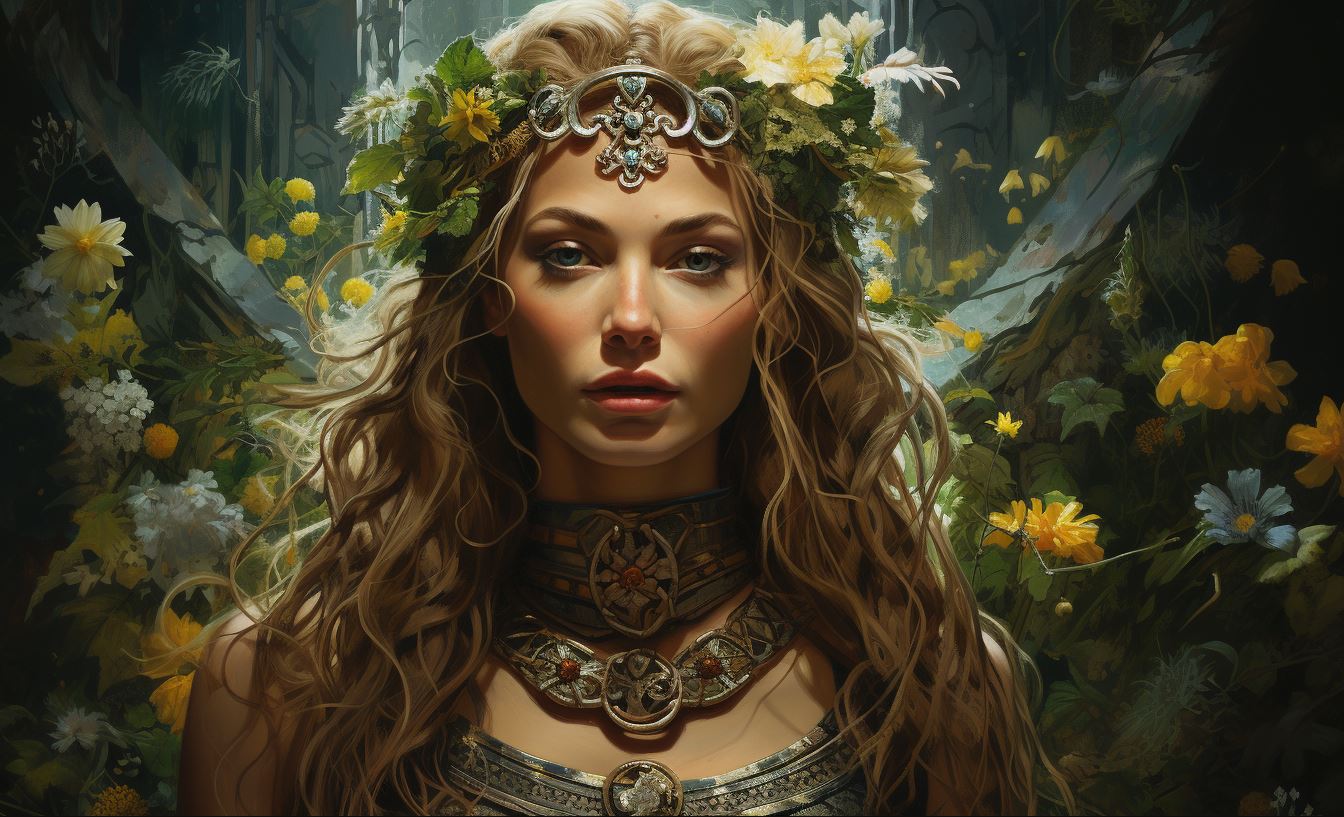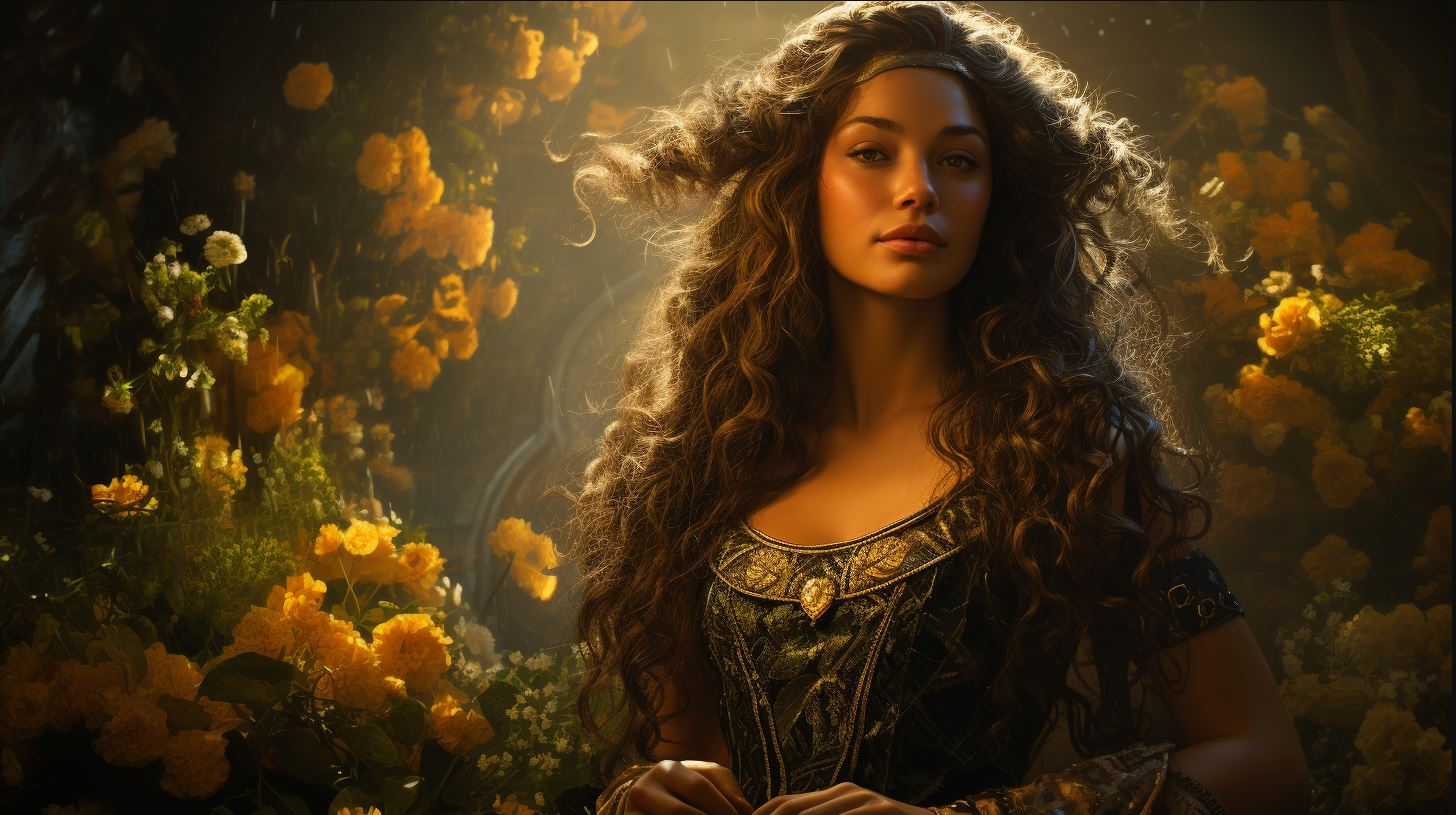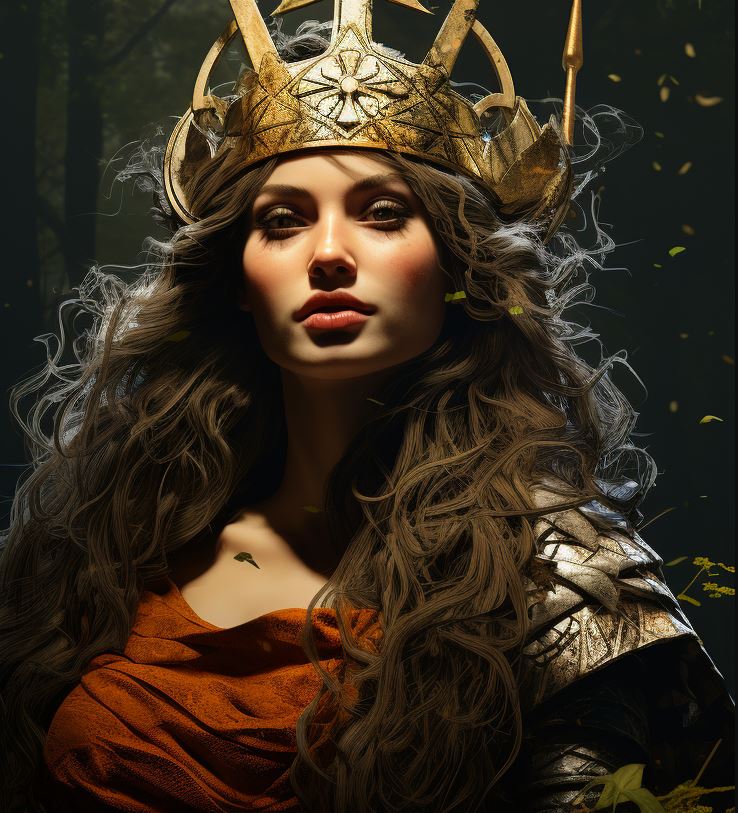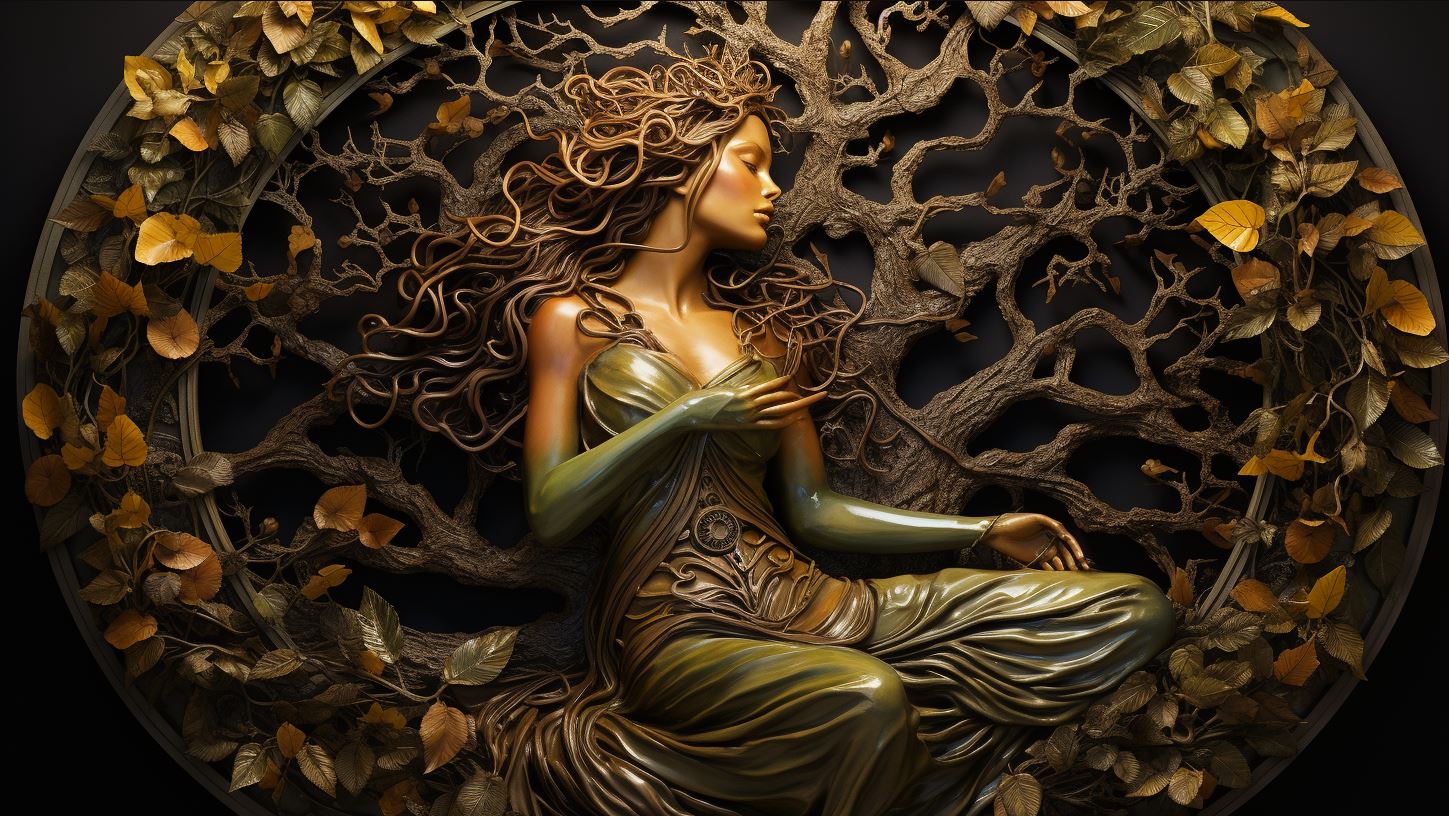Brigid Celtic Goddess: Exploring the Power and Influence of the Celtic Deity

Brigid Celtic Goddess is an important figure in Celtic mythology, associated with fire, healing, poetry, wisdom, and protection. She is regarded as a triple deity, with sisters connected to healing and blacksmithing.
Brigid is revered in both Celtic and Christian religions, where she is known as Saint Brigid. Her festival, Imbolc, marks the end of winter and the beginning of spring. Brigid’s influence extends to various aspects of life, from fertility and motherhood to inspiration and home protection.
Her legacy persists in Celtic tradition and culture.
The Origins of Brigid in Celtic Mythology
The mythology of Brigid, the Celtic goddess, traces back to ancient times. She held a significant role as a triple deity, embodying different aspects of life and nature. Brigid’s prominence in Celtic mythology is a testament to her revered status among the Celtic people.
Let us explore the various dimensions associated with Brigid and her rich heritage.
The Role of Brigid as a Triple Deity
Brigid is often depicted as a triple deity, symbolizing the trinity of power, wisdom, and fertility. Each aspect of Brigid represents a different facet of existence. The first aspect embodies her connection to fire, symbolizing her transformative and purifying qualities.
The second aspect focuses on her role as a healer and guardian of health, emphasizing her ability to bring forth wellness and healing. Finally, the third aspect represents her association with poetry and inspiration, highlighting her role as a patroness of the arts and creativity.
Brigid’s Associations with Fire, Healing, and Poetry
Fire holds special significance in Brigid’s mythology. It represents both the literal and metaphorical aspects of fire, symbolizing warmth, illumination, and transformation. Brigid’s association with fire is linked to her role as a goddess of purification and protection, safeguarding her devotees from harm.
Additionally, Brigid’s connections to healing further enhance her role as a compassionate deity, offering solace and restoration to those in need. As a goddess of poetry, Brigid inspires and guides artists and bards, promoting the expression of beauty and wisdom through words and verse.
Brigid’s Sisters: Deities of Healing and Smithing
In Celtic mythology, Brigid is often mentioned alongside her sisters, who are associated with healing and smithing. These sisters, whose names vary across different sources, share similar attributes with Brigid, emphasizing their collective influence in domains such as medicine, craftsmanship, and artisanal skills.
The bond between these goddesses reinforces the importance of their combined powers and the interconnectedness of their realms.
Brigid in Celtic and Christian Religions
Brigid’s Adaptation in Irish Christianity
Brigid’s significance in the Celtic religion seamlessly traversed into Irish Christianity, where she was assimilated as Saint Brigid. This fusion allowed the Irish people to seamlessly transition their devotion from the Celtic Brigid to the Christian saint.
Saint Brigid became one of the most revered figures in Irish Christianity, renowned for her compassion, miracles, and acts of service.
Brigid and Her Feast Day in Ireland
In Ireland, Saint Brigid’s feast day is celebrated on the 1st of February, which coincides with the pagan festival of Imbolc. This date represents the transition from winter to spring. The festivities include various rituals, such as lighting candles and bonfires, paying homage to Brigid’s association with fire as a symbol of purification and renewal.
It is a time for communities to come together in celebration.
The Influence of Brigid in Irish Culture and Literature
Brigid’s influence extends beyond religious realms and permeates into Irish culture and literature. Her name is interwoven into Irish folklore, poetry, and songs. Throughout history, numerous tales have depicted Brigid as a symbol of femininity, strength, and resilience.
She represents the nurturing aspect of Irish heritage and serves as a source of inspiration for artists, writers, and musicians.
- Poetry: Brigid’s name has been celebrated in countless poems that explore her divine qualities.
- Art: Artists have depicted Brigid in various forms, emphasizing her divine attributes and role as a protector.
- Music: Musicians have composed melodies and songs dedicated to Brigid, capturing her essence and cultural significance.
Examples of Brigid’s Influence in Irish Culture
Imbolc: Brigid’s Pagan Festival
Imbolc is a significant pagan festival closely associated with Brigid, the Celtic goddess.
This celebration marks the transition from winter to spring, embodying the renewed energy and vitality that comes with the changing seasons.
Imbolc as the Transition from Winter to Spring
Imbolc serves as a joyous reminder that the harsh winter months are coming to an end and that the promise of spring is on the horizon. It is a time of anticipation and hope, as nature begins to awaken from its slumber.
Brigid’s Connection to Fertility and Protection in the Home
Linked to the concept of fertility, Brigid is revered during Imbolc for her association with new life and the nurturing of seeds. She is seen as a guardian of hearth and home, providing protection and blessings to households during this transitional period.
Brigid’s Sacred Wells in Ireland and Britain
Throughout Ireland and Britain, there are numerous sacred wells dedicated to Brigid. These wells are considered sacred sites, where individuals seek healing, blessings, and guidance from the goddess. It is customary to leave offerings, such as coins or cloth, at these sacred wells as a gesture of respect and gratitude.
Imbolc, and its connection to Brigid, is a time of celebration and reverence for the goddess’s influence over fertility, protection, and healing. As we embrace the arrival of spring, we honor Brigid’s enduring presence and the wisdom she imparts upon us.
Brigid’s Legacy in Ancient Mythology and Modern Society
When examining Brigid’s legacy, we can draw fascinating comparisons between her and other goddesses of Greek and Celtic mythologies. While each deity possesses unique qualities, Brigid, with her associations with fire, healing, and poetry, shows similarities to the Greek goddess Hestia, who represents domesticity and the hearth.
Additionally, Brigid’s triple deity status aligns her with Celtic goddesses like Epona, who symbolizes fertility and the protection of horses, and Morrigan, a goddess associated with battle and sovereignty.
Brigid’s Comparisons with Greek and Celtic Goddesses
Brigid’s role in ancient Celtic literature is significant, especially in the tales of the Tuatha Dé Danann, a group of divine beings in Irish mythology. As a member of this mystical race, Brigid’s prominence is clear, demonstrating her contributions to Celtic culture and folklore.
Her presence and influence in these stories not only solidify her status as a revered deity but also highlight her impact on ancient Celtic beliefs and practices.
Brigid’s Role in the Tuatha Dé Danann and Ancient Celtic Literature
The influence of Brigid extends beyond ancient mythology and literature. Throughout history, poets and artists have sought inspiration from Brigid, recognizing her as a patroness of creativity and craftsmanship. Her association with the creation of poems and her connection to metalworking serve as a source of motivation for those in the artistic realm.
Brigid’s influence on artistic expression, both in ancient times and the present day, showcases her lasting impact on poets, writers, and artists across generations.
Brigid’s Influence on Poets and Artists throughout History
Brigid’s powerful presence in ancient mythology and her enduring legacy in modern society highlight her role as a symbol of feminine power and wisdom. Her efforts in healing and nurturing, along with her association with wisdom and inspiration, make her an icon of empowerment for women.
Brigid’s legacy as a revered deity continues to resonate, reminding us of the strength and wisdom found in femininity. Her relevance in the modern world showcases the enduring nature of her influence and the importance of recognizing the contributions of powerful female figures throughout history.
Brigid as a Symbol of Feminine Power and Wisdom
Brigid, the Celtic Goddess, embodies the essence of feminine power and wisdom. Her multifaceted nature encompasses various aspects, including her efforts in healing and nurturing, her role as a goddess of wisdom and inspiration, and her relevance and appreciation in the modern world.
Brigid’s Efforts in Healing and Nurturing
Brigid’s nurturing qualities symbolize her dedication to healing and preserving life. She is renowned for her ability to bring comfort and solace to those in need. Through her nurturing presence, Brigid offers support and compassion, guiding individuals towards physical, emotional, and spiritual well-being.
Brigid’s Role as a Goddess of Wisdom and Inspiration
Brigid’s position as a goddess of wisdom and inspiration is deeply revered. Her vast knowledge and insight allow her to provide guidance and enlightenment to those seeking wisdom and understanding. Brigid’s poetic abilities serve as a conduit for divine inspiration, inspiring artists, writers, and thinkers throughout history.
Brigid’s Relevance and Appreciation in the Modern World
In the modern world, Brigid continues to resonate as a symbol of feminine power and wisdom. Her legacy transcends time and cultural boundaries, touching the lives of many who recognize her significance.
People draw inspiration from Brigid’s strength, using her as a role model for empowerment, justice, and equality.
The enduring influence of Brigid as a symbol of feminine power and wisdom serves as a reminder of the timeless relevance of goddess archetypes and their significance in today’s society.
Through Brigid, we find inspiration, guidance, and the affirmation of the strength and wisdom that resides within all of us.
.




















